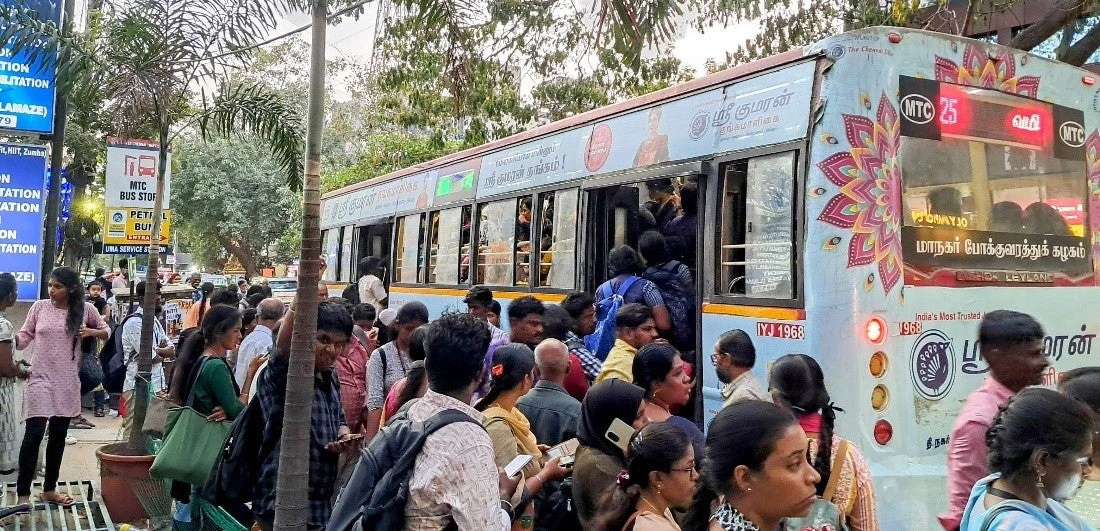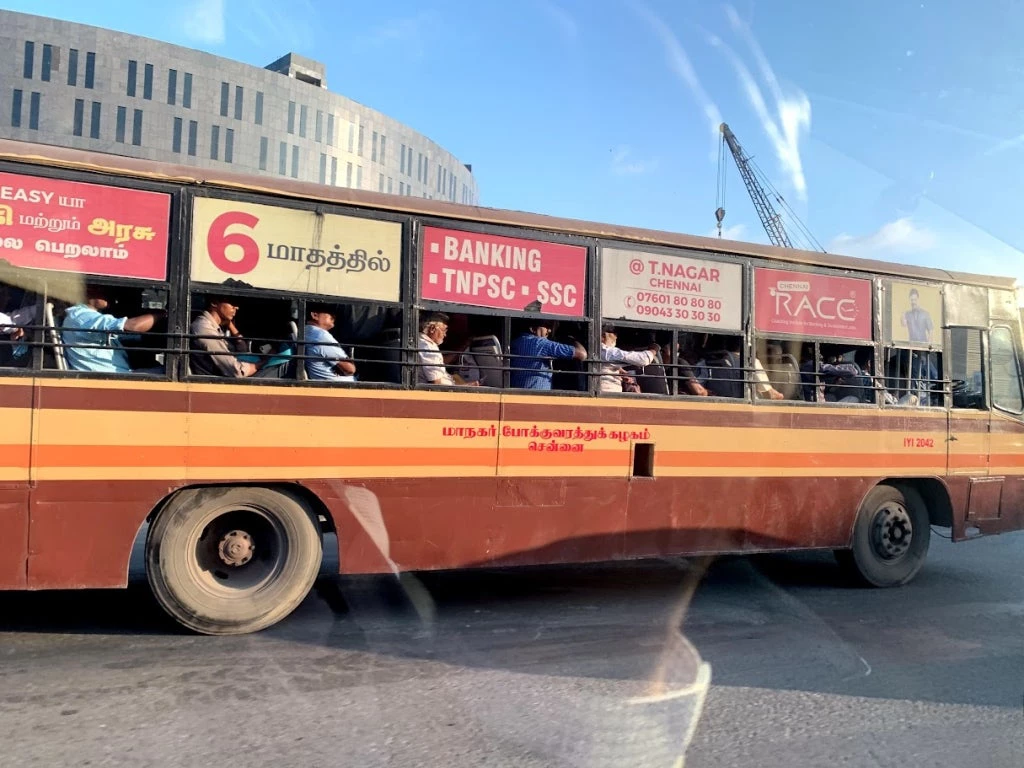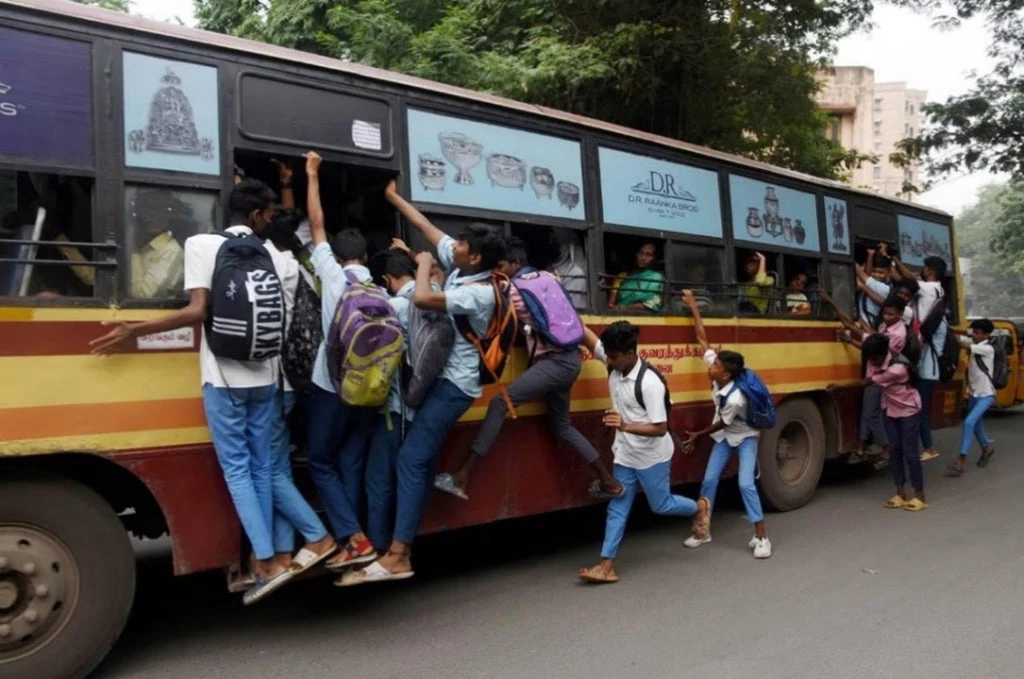 Passengers board city buses operated by MTC in Chennai, Tamil Nadu.
Passengers board city buses operated by MTC in Chennai, Tamil Nadu.
Walk through the charming streets of Chennai in southern India and you will be surrounded by the usual bustle of a vibrant city – cars abound, motorcycles weave through the traffic, buses lumber along, passengers wait eagerly at bus stops, while pedestrians wend their way through the crowd.
Safe, efficient, and affordable public transport is a clear need for the cities of the developing world. Buses are critical, for they remain affordable for all and are accessible for vulnerable users such as the elderly, women, and children.
Yet, despite their potential, bus services often fail to meet citizens’ aspirations for safe and reliable public transport. In Chennai, for instance, despite the city’s rapid growth, bus ridership fell from some 4 million passengers a day to less than 3 million between 2014-15 and 2018-19. It now stands at 2.8 million a day (2022-2023).

While ridership has fallen, the monopoly provider of bus services – the state-owned Metropolitan Transport Corporation – has seen a steady rise in staff and fuel costs. This, together with limited growth in revenue due to concessional fares, has led to a vicious cycle of under-investment, resulting in overcrowded buses, a decline in the quality of services, and fewer riders.
Creating a faster, modern, and efficient bus network
Recognizing the urgent need for change, the Government of Tamil Nadu, with support from the World Bank, devised a comprehensive strategy to transform the city’s bus services into a world-class, customer-centric, and sustainable enterprise, under the World Bank’s ‘Chennai City Partnership’. Similar initiatives in Singapore, Paris and London have had transformative impacts.
In July 2023, the Government of Tamil Nadu approved a long-term (10 year) Vision and a medium-term (5 year) Business Plan to guide the transformation. The Vision seeks to almost double the average daily bus ridership to 5.3 million by 2032, in addition to more than doubling the fleet size from some 3,500 buses to over 7,500. Key performance indicators have been defined to monitor the performance of the bus service and the degree of customer satisfaction.
1. Business plan: The Business Plan aims to give the Chennai Metropolitan Area (CMA) a faster, modern and efficient bus network that is seamlessly integrated with other modes such as mass transit (metro) systems and last mile connectivity.
Under the Plan, by 2028, 87% of households, jobs and educational institutions are to be within a 10-minute walk of a bus stop. The bus network is also to be safe and secure with zero tolerance for harassment. MTC is to transition to green buses.
From April 2026 onwards, it is to procure only electric buses and improve fuel efficiency by training its drivers and ensuring the regular maintenance of buses. MTC is also to leverage multiple technologies to provide real-time information to passengers throughout the network, with 60 percent of the tickets being issued digitally.
The Plan also aims to make the bus network financially sustainable, supported by regular viability gap funding from the government. Services are to improve through a change in the service mix, better integration with metro and suburban rail services and better fleet utilization (to 87%) with regular consultations with commuters.
2. Public Transport Service Contract (PTSC): To formalize the commitment, a PTSC has been signed between the Government of Tamil Nadu and MTC. Starting in 2023, the PSTC will form part of the fleet, being gradually expanded to cover the entire fleet. The PTSC ensures Viability Gap Funding for capital and operational expenses over a five-year period, subject to MTC meeting its performance targets. It stipulates clear roles and responsibilities for the concerned agencies, along with regular reporting of performance, timely disbursement of funds, and an annual review of targets and the Business Plan.
3. Shifting from ‘operations’ to ‘service delivery’: For fleet augmentation, MTC would introduce alternative business models, such as deploying 1,000 electric buses on Gross Cost Contract (GCC) basis under the Chennai City Partnership. Under this arrangement, MTC will sign contracts with private operators who would be responsible for fleet provision and operations. This will allow MTC to streamline operations and focus on service planning and delivery, instead of owning and operating the buses. In parallel, MTC would renew its fleet under in-house operation, leveraging support from various sources, such as KfW.

By adopting a comprehensive framework that includes a business plan, PTSC and GCC-based procurement of electric buses, funding for public transport can be made transparent, consistent and efficient.
The transformation of Chennai’s bus services will also provide valuable lessons and serve as a template for other cities to follow.




Join the Conversation